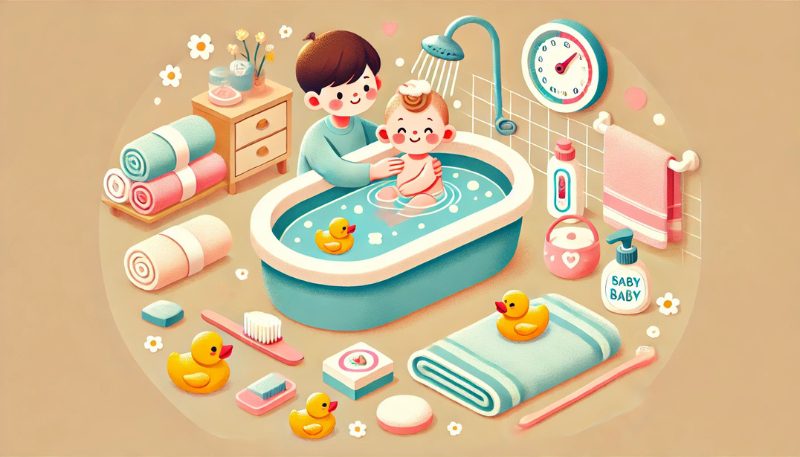Table of Contents
Safe Bathing Newborns Toddlers
Bathing your little one can be a special bonding time, but it’s important to follow safe practices to ensure their comfort and safety. In this guide, we’ll cover everything you need to know about safe bathing for both newborns and toddlers. From the right water temperature to choosing the best bath products, these tips will help make bath time both enjoyable and secure for your baby. Throughout the article, we’ll also highlight essential products from E Baby Mart that can make bath time safer and easier for you and your little one.
When caring for your baby, it’s essential to understand that newborns have sensitive skin that requires gentle handling during bath time. Many experts recommend bathing infants no more than three times a week in their first year to prevent skin irritation. For detailed guidance on safe bathing practices, including the importance of maintaining a warm environment and the proper techniques for sponge and tub baths, visit Bathing and Skin Care for the Newborn – University of Rochester Medical Center.
Preparing for Bath Time: Baby Bath Basics: A Parent’s Guide
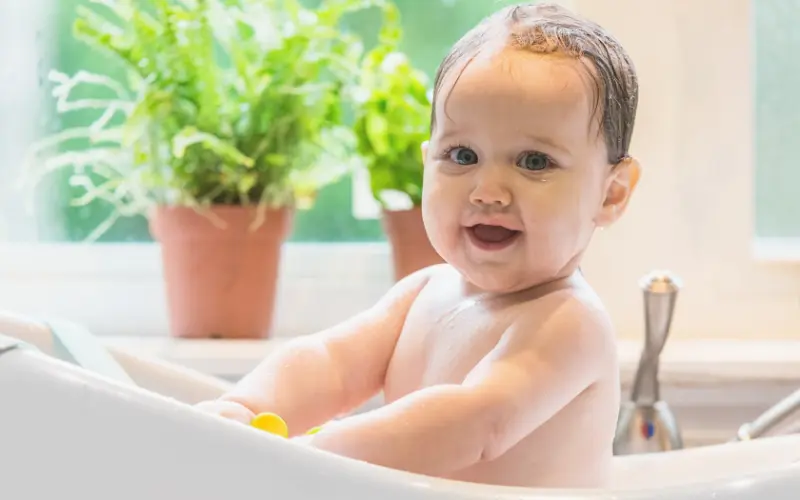
Before you start bathing your baby, preparation is key. Having everything you need on hand will make the process smoother and more enjoyable. Here’s a checklist of must-haves for bath time:
- A safe and comfortable baby bathtub or bath seat
- Mild, baby-friendly soap and shampoo
- A soft washcloth
- A towel (preferably hooded) to wrap your baby in after the bath
- A thermometer to ensure the water is at a safe temperature
Our Baby Bath Seat is a great choice for keeping your baby secure during bath time. It provides extra support for your newborn or toddler, ensuring they don’t slip around. Additionally, our Soft Hooded Baby Towel is perfect for drying your baby gently, keeping them warm and cozy right after bath time.
How to Bathe Your Newborn

Bathing your baby for the first time can feel intimidating, but with the right approach, it becomes a routine you’ll both enjoy. For newborns, sponge baths are recommended until the umbilical cord falls off. Here’s a step-by-step guide on how to bathe your newborn safely:
- Prepare the bath area: Make sure the room is warm and draft-free. Lay out all necessary items within arm’s reach.
- Check the water temperature: Always use a bath thermometer to ensure the water is between 98°F and 100°F (37°C to 38°C). Our Baby Bath Thermometer makes it easy to check the water temperature, ensuring your baby’s bath is comfortable and safe.
- Sponge baths first: Until the umbilical cord stump falls off, gently clean your baby’s face and body with a soft washcloth dipped in warm water.
- Support your baby’s head and neck: Always keep one hand on your baby, especially during sponge baths, to provide stability.
Once the umbilical cord stump has healed, you can start immersing your baby in a shallow tub of water, making sure to keep their head above the water at all times.
Bathing Your Baby: Keeping Toddlers Safe
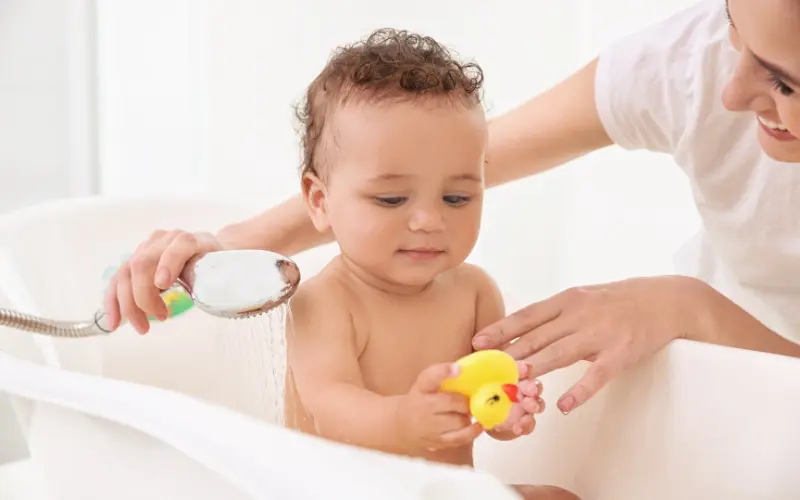
As your baby grows into a toddler, bath time becomes more playful, but safety is still a top priority. Toddlers are active and curious, which can sometimes make bath time a challenge. Here are some key tips for bathing your baby as they transition into toddlerhood:
- Never leave your child unattended: Even for a second. Always stay within arm’s reach, and if you need to step away, take your toddler with you.
- Use a non-slip mat: Toddlers can be quite wiggly, so it’s important to prevent slips and falls. Non-Slip Bath Mat provides excellent grip and keeps your child safe while they splash around.
- Keep the water shallow: For toddlers, only fill the bath with a few inches of water to minimize the risk of drowning.
- Choose gentle bath products: Toddlers have sensitive skin, so always opt for gentle soaps and shampoos designed for young children.
Baby Bath Basics: A Parent’s Guide to Water Temperature and Safety
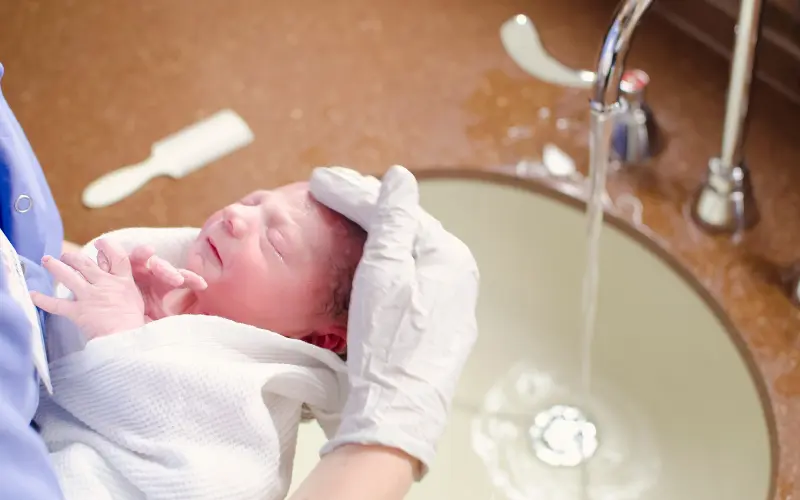
One of the most critical aspects of bathing your baby is ensuring the water is at the correct temperature. Water that’s too hot can burn your baby’s delicate skin, while water that’s too cold can make them uncomfortable. As mentioned earlier, using a bath thermometer is essential for maintaining the right water temperature.
Additionally, always run the cold water first, then mix in the hot water to get it to the desired temperature. Always test the water with your wrist or elbow before placing your baby in the tub.
In addition to temperature, consider the following safety tips:
- Limit bath time to 10-15 minutes. Prolonged exposure to water can dry out your baby’s skin.
- Install anti-scald devices on your faucets to prevent accidental hot water surges.
- Always supervise and never rely on older siblings to watch over your baby or toddler during bath time.
How to Bathe Your Newborn Without Stress
Bath time should be a relaxing experience for both you and your newborn. To avoid stress, make sure your baby is well-fed and calm before starting the bath. Some newborns might cry during their first few baths, which is perfectly normal. Try to maintain a soothing environment by talking softly and gently washing their body.
Remember, newborns don’t need a bath every day—two or three times a week is sufficient. On non-bath days, you can simply clean your baby’s face, neck, and diaper area with a damp washcloth.
When you feel confident in how to bathe your newborn, bath time will become a cherished routine. Our Hooded Baby Towel helps keep your baby warm and dry afterward, reducing any chance of them getting cold right after a bath.
Bathing Your Baby: Special Considerations for Toddlers
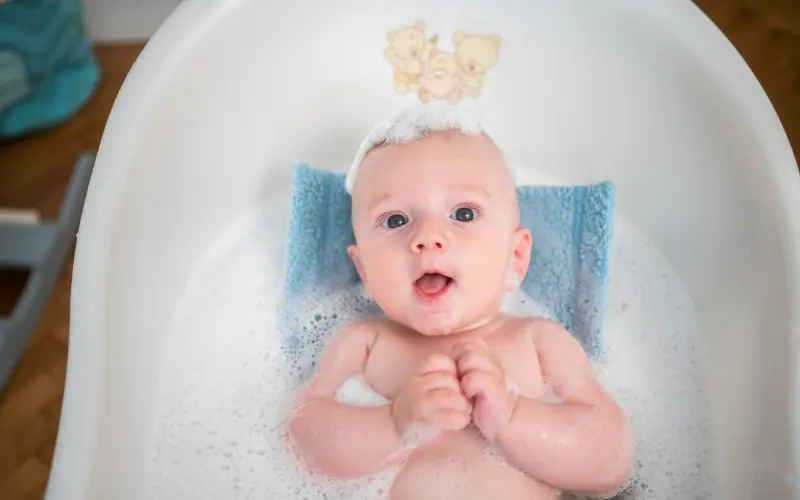
Bathing toddlers can be more interactive and fun, but it comes with its own set of challenges. Toddlers are more independent and may resist sitting still. To make bath time smoother, turn it into a playful experience with bath toys and games.
Here are some additional tips for bathing your baby during the toddler years:
- Introduce bath toys to keep your toddler engaged.
- Sing songs or tell stories to make the experience more enjoyable.
- Set a routine so your toddler knows what to expect, making bath time more predictable and less stressful.
Additionally, toddlers can begin to learn basic hygiene practices, such as washing their hands and rinsing their hair. Encouraging these small responsibilities helps them feel involved and empowered during bath time.
Baby Bath Basics: A Parent’s Guide to Safe Bathing
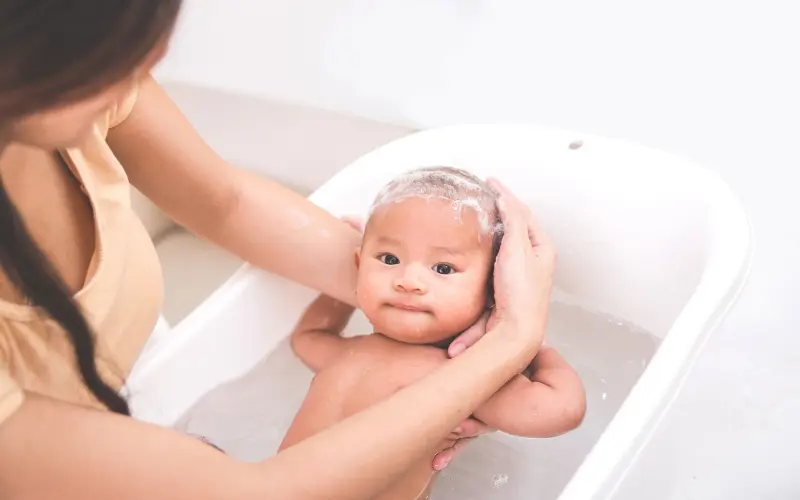
Bath time is an important routine that helps keep your baby or toddler clean and healthy. Following safe bathing practices, like checking the water temperature, using non-slip mats, and staying within arm’s reach, is essential for preventing accidents. Whether you’re learning how to bathe your newborn for the first time or trying to manage an active toddler during bath time, the right products and techniques can make all the difference.
Our store offers a variety of essential bath products, including the Baby Bath Seat, Soft Hooded Baby Towel, and Non-Slip Bath Mat, all designed to make bath time safer and more enjoyable for both you and your little one.
Conclusion: Safe Bathing for Happy Babies and Toddlers
In conclusion, bathing your baby is a wonderful opportunity to bond and care for your little one, but safety should always come first. By following these simple guidelines and investing in the right bath products, you can ensure that bath time is both fun and safe for your newborn or toddler. Don’t forget to explore our store for more items that can help make bath time easier, including bath thermometers, soft towels, and non-slip mats.

